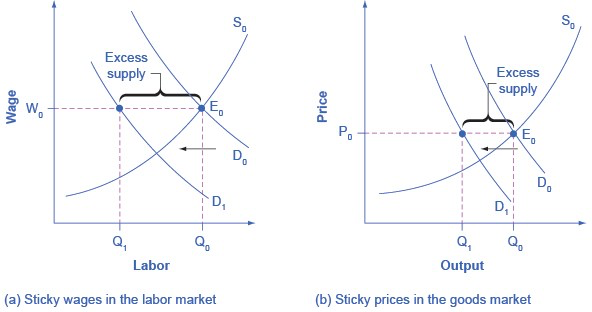Menu Costs
What are Menu Costs?
- Marketing, Advertising, Sales & PR
- Accounting, Taxation, and Reporting
- Professionalism & Career Development
-
Law, Transactions, & Risk Management
Government, Legal System, Administrative Law, & Constitutional Law Legal Disputes - Civil & Criminal Law Agency Law HR, Employment, Labor, & Discrimination Business Entities, Corporate Governance & Ownership Business Transactions, Antitrust, & Securities Law Real Estate, Personal, & Intellectual Property Commercial Law: Contract, Payments, Security Interests, & Bankruptcy Consumer Protection Insurance & Risk Management Immigration Law Environmental Protection Law Inheritance, Estates, and Trusts
- Business Management & Operations
- Economics, Finance, & Analytics
What are Menu Costs?
These costs of changing prices are called menu costs—like the costs of printing a new set of menus with different prices in a restaurant. Prices do respond to forces of supply and demand, but from a macroeconomic perspective, the process of changing all prices throughout the economy takes time.
To understand the effect of sticky wages and prices in the economy, (a) illustrating the overall labor market (b) illustrates a market for a specific good or service. The original equilibrium (E0) in each market occurs at the intersection of the demand curve (D0) and supply curve (S0). When aggregate demand declines, the demand for labor shifts to the left (to D1). And the demand for goods shifts to the left (to D1) . However, because of sticky wages and prices, the wage remains at its original level (W0) for a period of time and the price remains at its original level (P0).
As a result, a situation of excess supply—where the quantity supplied exceeds the quantity demanded at the existing wage or price—exists in markets for both labor and goods, and Q1 is less than Q0. When many labor markets and many goods markets all across the economy find themselves in this position, the economy is in a recession; that is, firms cannot sell what they wish to produce at the existing market price and do not wish to hire all who are willing to work at the existing market wage. The Clear It Up feature discusses this problem in more detail.

In both (a) and (b), demand shifts left from D0 to D1. However, the wage in (a) and the price in (b) do not immediately decline. In (a), the quantity demanded of labor at the original wage (W0) is Q0, but with the new demand curve for labor (D1), it will be Q1.
Similarly, in (b), the quantity demanded of goods at the original price (P0) is Q0, but at the new demand curve (D1) it will be Q1. An excess supply of labor will exist, which we call unemployment. An excess supply of goods will also exist, where the quantity demanded is substantially less than the quantity supplied. Thus, sticky wages and sticky prices, combined with a drop in demand, bring about unemployment and recession.
Related Topics
- Keynesian Perspective of Aggregate Demand
- Recessionary and Inflationary Gap
- Consumption Expenditure
- Investment Expenditure
- Government Spending in Aggregate Demand
- Net Exports in Aggregate Demand
- Keynesian Economic Analysis
- Wage and Price Stickiness
- Coordination Argument of Wage Stickiness
- What are Menu Costs
- Keynesian Assumptions in the Aggregate Demand and Aggregate Supply Model
- Macroeconomic Externality
- Expenditure Multiplier
- The Phillips Curve
- Keynesian Approach to Unemployment and Inflation
- Keynesian Perspective on Market Forces
- NeoClassical Economics
- Long Run Potential GDP
- Physical Capital Affects Productivity
- Potential GDP in the Aggregate Demand Aggregate Supply Model
- Prices are Flexible in the Long Run
- Keynesian and NeoClassical View of Long-Run Aggregate Supply and Demand
- Speed of Macroeconomic Adjustment of Wages and Prices
- Paradox of Rationality
- Rational Expectations Theory
- Shapley Value
- Mechanism Design Theory
- What is the Adaptive Expectations Theory
- Measure Inflation Expectations
- Neoclassical Phillips Curve Tradeoff
- Neoclassical View of Unemployment
- Neoclassical View of Recessions
- Keynesian vs Neoclassical Macroeconomic Policy Recommendations